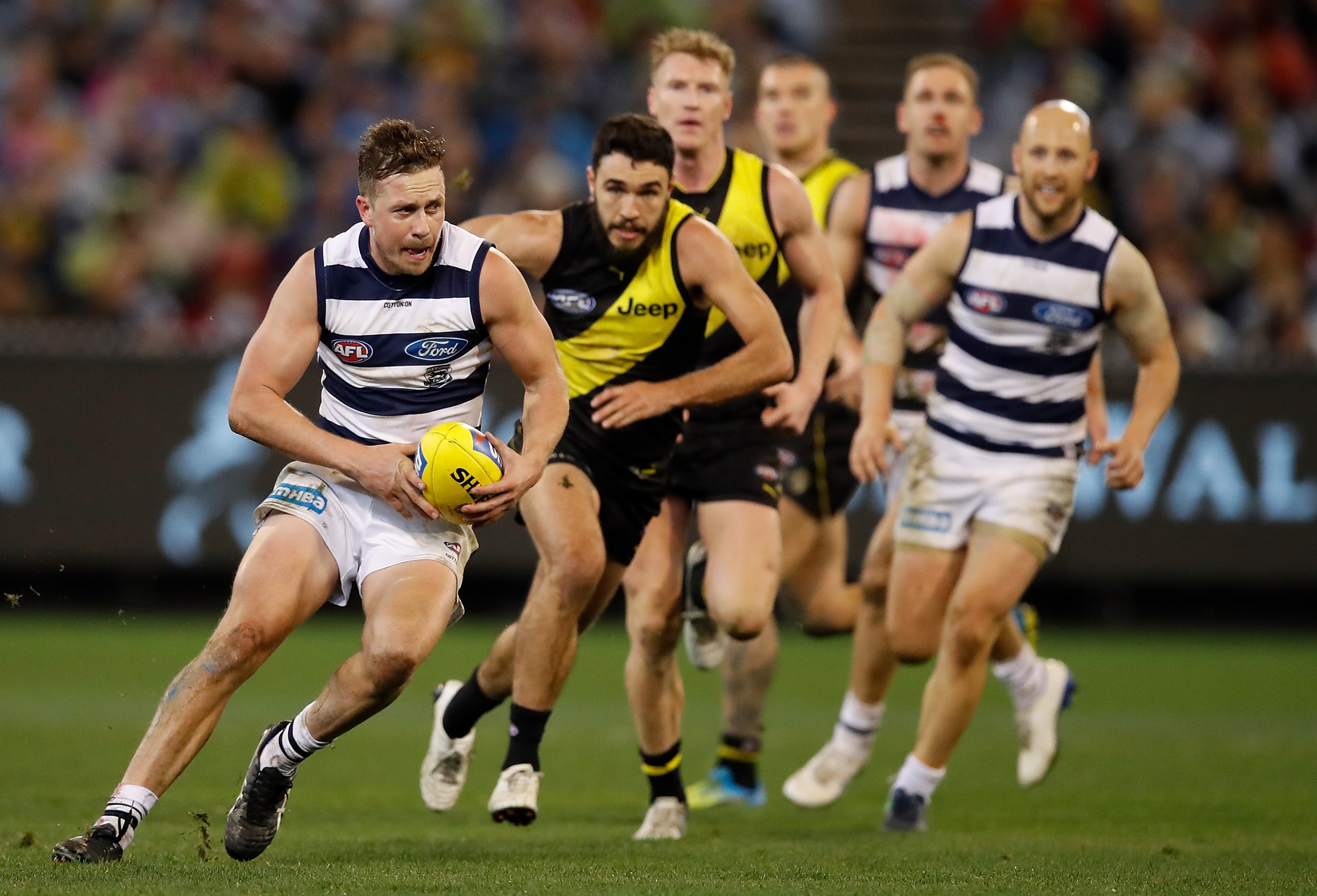After the AFL implemented new rule changes for the 2019 season, the league is set for somewhat of a shake-up. Which new rules will benefit which players at the Geelong Football Club?
6 – 6 – 6 Rule
What has changed? Teams require six players within both defensive and forward 50, as well as six set in the midfield.
Joel Selwood – The unofficial mayor of Geelong may enjoy more freedom at centre bounces due to this rule, with his otherworldly contested ability, high footy IQ and bewildering courage. He ranked in the top 20 for average contested possessions and top 10 for total centre clearances in 2018. Without players streaming in from the opposition’s forward or defense, Selwood will have more room to find the footy and clear the centre circle.
Tim Kelly – Smooth, agile and untouchable – just a few words one might use to describe ‘TK’. Give this man room to find the footy and he will burn you. Last season, he averaged more inside 50s than most of the competitions elite midfielders. The 6-6-6 rule will give Kelly more room to get on the outside of centre bounces and break free from the pack to deliver the ball inside fifty as well as he did in his rookie season.
Kick in Alteration
What has changed? Players do not need to kick to themselves in order to play on. The man on the mark will be placed 10 metres from the goal square after a behind.
Zach Tuohy – A key part of Geelong’s rag-tag standout defense, Tuohy took 88 kick-ins throughout his 22 home and away games, 26 of which he played on from. Renowned for his ability to kick an exceptional torpedo, the distance between the mark and goal square will allow for him to send the footy further towards forward fifty.
Tom Stewart – This All-Australian defender could be primed for a boost in a number of statistical categories with these new rules. Pairing with Tuohy throughout last season on kick-in duties, Stewart took 76 and played on from over half of that. As players are no longer required to kick to themselves, his blistering pace has the potential to catch opposition forwards off guard by accelerating without warning, giving him more room to advance the footy up the ground as well.
50 Metre Penalties Adjustment
What has changed? Players can advance the mark by 50 metres without being hindered by the opposition player the penalty was called against. Players can play on while the penalty is being measured out.
Patrick Dangerfield & Gary Rohan – When these two speedsters get the ball in their hands and an open patch of grass in front of them don’t blink, or you’ll miss it. This rule change let’s players play on from 50 metre penalties, unhindered by the opposition player delaying the game. This could give Dangerfield and Rohan an opportunity to move the ball closer to goal and create space through the midfield, taking advantage of unaware opposition.
Mitch Duncan – Give this man a target to hit by foot and he’ll make it. Give him an unsuspecting opposition backline and he’ll exploit them. One of the best distributors by foot in the AFL, Duncan has turned his left and right boot into an absolute offensive weapon. Combine this skill with the chance to catch defenders off guard with a hasty fifty metre advancement, and he’ll have himself an inside fifty and a likely score involvement.
Hands in the Back During Marking Contest
What has changed? Players are allowed to place their hands in the back of opposition players, so long as they do not push them in the back.
Tom Hawkins – Geelong’s leading goal kicker for 2018, the ‘Tomahawk’ also ranked sixth in the AFL for total contested marks and second for total marks inside 50. As arguably the strongest key position forward, this rule will help Hawkins establish his position within marking contests. The rule states players are allowed to place their hands in the back of other players to strengthen their position, so long as they do not push the defender forward. As if he wasn’t enough of a matchup issue, this rule will only make him stronger.
Patrick Dangerfield – Not only does ‘Danger’ have obscene speed, his ability to outmuscle defenders lead him to 25 contested marks for the 2018 home and away season. Whether it’s on the wing or forward, he can use the alteration of the rule much in the same way as Hawkins. This is only going to make it harder for defenders to match up against the Brownlow medallist.
Kicking Around the Body/Check-side After the Siren
What has changed? Set shots after play has ended can be taken as a snap or check-side kick rather than the standard drop punt. Players must stay directly in line with the mark when taking the kick.
Gary Ablett – Imagine Ablett taking a set shot after the final siren to win the game, but on an impossible angle…if only he could snap the footy instead of having to take a set shot. Thanks to this rule change, he can. By allowing players to kick the ball around their body or using a check-side kick for goal after the siren, angles on set shots at the end of play can be bent. It’s a small alteration to the past rule of solely using a drop punt, but it has potential, especially if the ‘Little Master’ finds himself in such a situation as mentioned. He undoubtedly has the skill level and finesse to capitalise.
Honourable Mention
Steve Johnson – This legend practically invented the snap, the banana and the check-side. The circumstances this rule is designed for would suit ‘Stevie J’ unfathomably well, it’s hard to deny.



